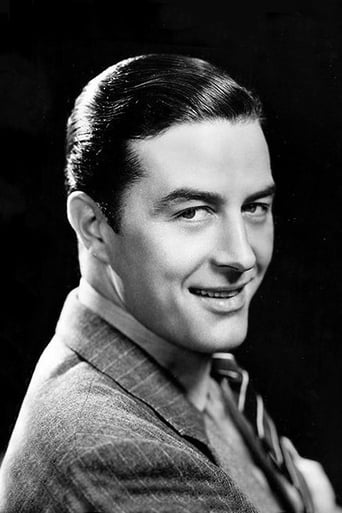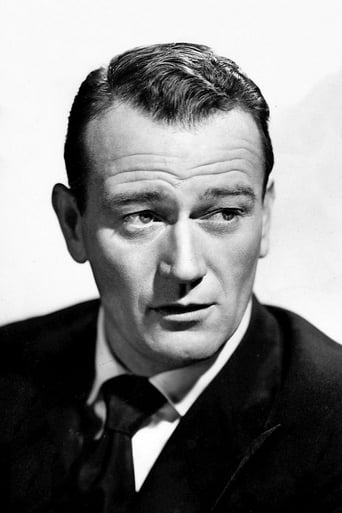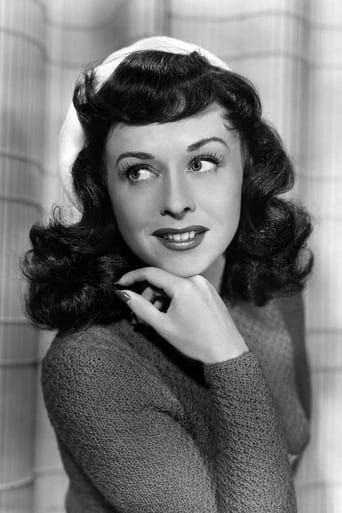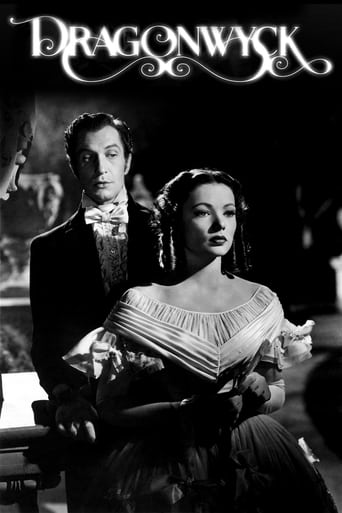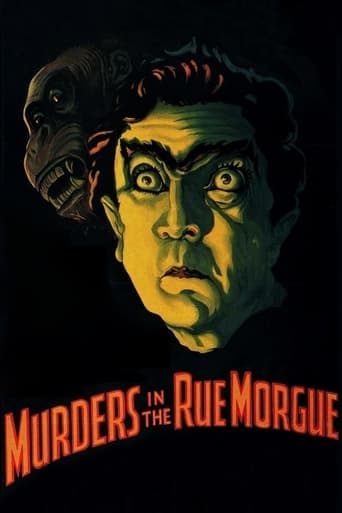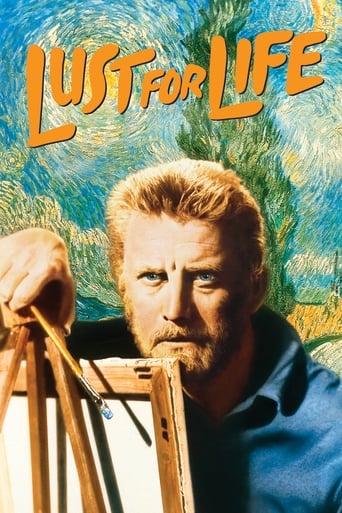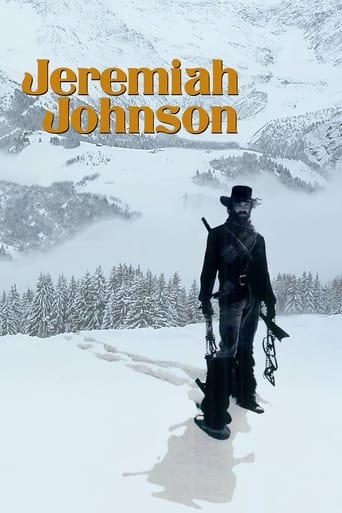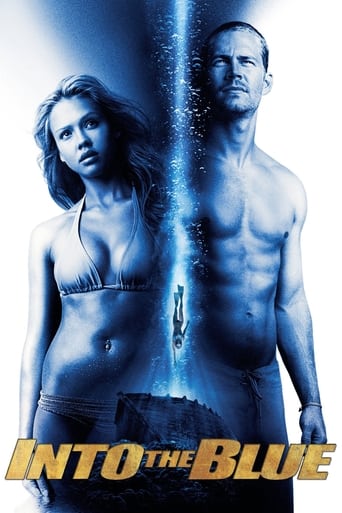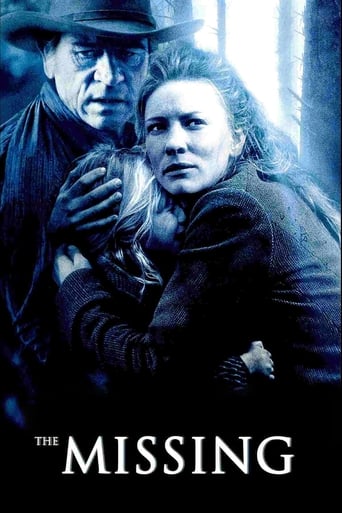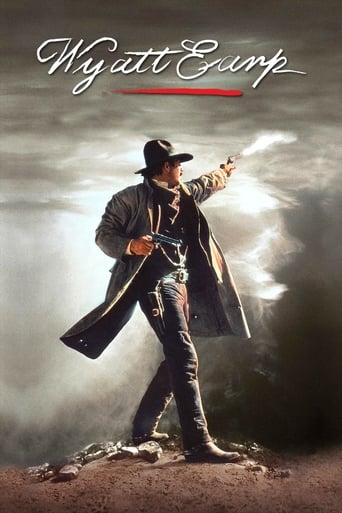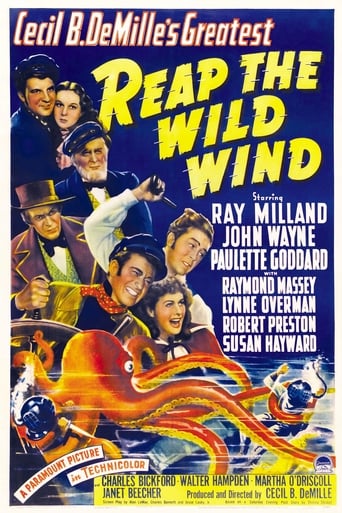
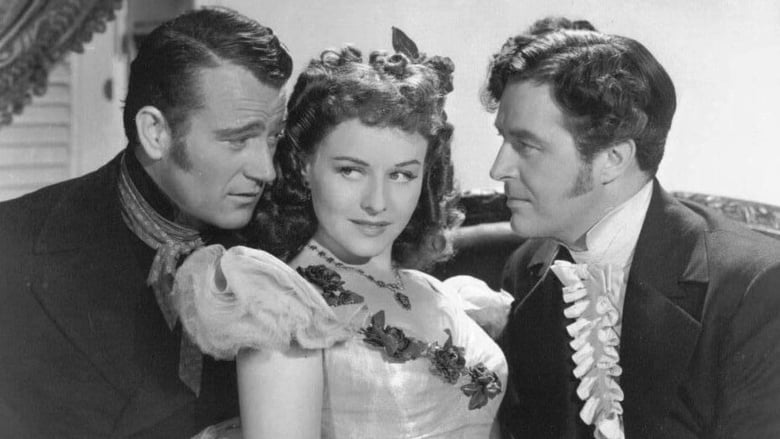
Reap the Wild Wind (1942)
The Florida Keys in 1840, where the implacable hurricanes of the Caribbean scream, where the salvagers of Key West, like the intrepid and beautiful Loxi Claiborne and her crew, reap, aboard frail schooners, the harvest of the wild wind, facing the shark teeth of the reefs to rescue the sailors and the cargo from the shipwrecks caused by the scavengers of the sea.
Watch Trailer
Cast


Similar titles
Reviews
Excellent but underrated film
An Exercise In Nonsense
I like movies that are aware of what they are selling... without [any] greater aspirations than to make people laugh and that's it.
It’s fine. It's literally the definition of a fine movie. You’ve seen it before, you know every beat and outcome before the characters even do. Only question is how much escapism you’re looking for.
. . . not only because of the prophetic nature of its on-screen story, but also due to the World-Changing Dark Powers of the shenanigans taking place behind the scenes. John Wayne reveals his True Colors by the end of REAP THE WILD WIND, and there's only one: an inky Black. During the first few reels, Wayne's "Captain Jack" appears to be the Hero. He's already got the Belle of the Ball, and he's on track to become a wealthy shipping mogul. But by the end credits his Ugly Spirit is laid bare; his transformation from Community Pillar to Craven Killer is far more convincing that Fred MacMurray's in DOUBLE INDEMNITY. In Real Life, between "takes" here, Wayne was plotting with co-star Hedda Hopper ("Aunt Henriette") to subvert American Society forever. While Hitler's Third Reich lasted less than a decade, the Wayne\Hopper New World Order is still marching along in its Jackboots today, 74 years later. Among the first of thousands of John and Hedda's early victims were the murdered GENTLEMEN'S AGREEMENT hero John Garfield and Paul Revere's several-times-great granddaughter Anne, Oscar-winning mom to NATIONAL VELVET. Hundreds of lesser-known war heroes returning Home from World War Two also would be destroyed by John & Hedda. TRUMBO puts the SPOTLIGHT on this whole sordid tale, but this year's Oscar voters--who didn't give a second thought to Dissing the Roman Catholic Church--would not dare to go after the still-entrenched John & Hedda Clique by giving TRUMBO a well-deserved Best Picture nomination. So the racist ilk portrayed in REAP THE WILD WIND is still having its way with us, like a giant squid squeezing the life out of America!
This colorful sea action yarn of shipwreck and illegal salvage in 1840s Key West was directed by Cecil B. De Mille so you shouldn't expect subtlety. When a woman is supposed to look "frightened," her eyeballs extrude as she claps her hands to her cheeks and gasps. A man who is "mean" looks like a Turkish pederast.It isn't slow, though. It zips along, plowing through the seas, charging through the courtroom scene, brawling through fist fights, lacking anything like pauses for character, humor, or whimsy, as bloodless as if drained by a vampire.The model work is pretty good for the period. It's true that the texture gradient is ignored, so that a distant splash of sea water throws up spray with drops as big as basketballs, but compared to a contemporary movie like "The Sea Hawk" it's convincing enough. And the color photography is above average. In some of the model shots, the many-masted rigs seem to sail under lenticular lavender clouds glowing with underbellies of a soft rose in the setting sun. The seas scintillate. The image is as pretty as a travel poster. Take Your Next Vacation In San Placebo, Getaway Of The Stars!It's taken from a story in the magazine founded by Benjamin Franklin, "The Saturday Evening Post." The weekly magazines were the source of many stories made into screenplays. "Stagecoach," for another instance, was from an Ernest Haycox story in "Collier's" magazine. The public used to READ MAGAZINES in the 1940s! I no its hard 2 believe.John Wayne has the role known as second male lead in this one -- second to star Ray Milland -- and it's just as well. Wayne would shortly turn into a serious performer but he wasn't there yet in 1941. Milland doesn't walk around in a cloud of pheromones either but he's animated, hits his marks, and delivers his lines with vigor.The two principal Southern ladies -- the charming and innocent Susan Hayward and the spirited, unconventional Paulette Goddard, whose character owes a lot to Scarlet O'Hara -- are amusing on screen together. Hayward was from Brooklyn and Goddard was born in Queens. They never forgot their New York background. Goddard left most of her estate to New York University when she died.The racial relations remain as stereotyped as ever. May I mock them? If Goddard resembles Scarlet, Louise Beavers resembles Mammy -- always shaking her head, mumbling about voodoo drums and scolding her charge -- but she's a pale imitation. De black folk, day neber called "slaves." Day be de friends of de buckra who hob de ballroom full wit people dat be dancin round in circles called de waltz in de Big House. I done forgit who be the darkie wit de big white eyes but he ain't de same booger who say in annudder movie, "Feets, don't fail me now!" One of the most memorable lines occurs when the indefatigable Ray Milland is pursuing the spunky young Goddard and she slaps him or something and he says, "You're very desirable when you're angry." That translates as, 'You're cute when you're mad," in case you missed it.It's not often that John Wayne plays a heavy, even a confused one, but he does here. He sells his integrity to spite Milland, whom he has been led to believe is his enemy. Wayne pays the price the code of the time demanded.Despite the portentous narrative introduction by De Mille himself, there isn't much in the way of spiritual nourishment to be had from this flick but you're not likely to be bored. It's designed specifically to prevent that from happening.
Cecil Blount DeMille, CB. The original 'Name Above The Title'. No matter what Frank Capra stated it was DeMille who put the Director/Producer over the title. His was a name that brought in the public and their money when Capra was still a 'gag man' for Mack Sennett. From the first feature film in Hollywood, THE SQUAW MAN (1914) to his last production, THE BUCCANEER (1958) he represented HollyWoods commercial success.With DeMille people fall into two (2) camps. We HATE that hack and his hokey movies or we love him for he put our dreams on the screen. We fall into that second group seeing our first DeMille film circa 1957 THE TEN COMMANDMENTS (1956). My brother was four (4) and I was six (6) and we were enthralled with CB from then on. He dared to put BIG THINGS on the screen. They may not of always worked but he was unafraid to do them, stretching the envelope technically and did not give a damn what his critics thought and neither do we.REAP THE WILD WIND (1942) was his second color film and we saw it in a re-release circa 1958. The plot is typical DeMille, obscure historical incident blown up for the big screen. Romance triangle punctuated by action sequences leading to a rousing conclusion. The film is well cast with Paramount Stars Paulette Goddard and Ray Milland. Not able to get Errol Flynn or Tyrone Power CB obtained John Wayne who turned in a credible and sincere performance. Milland stood up well to the 'Duke' and Ms. Goddard was a radiant love interest. A young Susan Hayward also showed her stuff with Robert Preston. Over shadowing all was Raymond Massey as the head villain with stooge Victor Kilian. Not to be forgotten was the CB stock company, from players who were with him during the silent era to Akim Tamiroff in a voice over for the 'Lamb'. Paramounts special visual effects wizard Gordon Jennings led that team and garnered a Oscar and Victor Young provide the score. Music being very important in carrying some of the fantastic goings on. Especially the Giant Squid scene that was directed underwater by CB himself.The one (1) thing we never understood about CB is that he left many (BETTER) projects go fallow after investing money and time developing them. A few were THE WAR OF THE WORLDS, TITANIC and WHEN WORLDS COLLIDE. Two (2) were done by George Pal with CB as uncredited producer. It would have been very interesting to see how these would have turned out if made in the 1930s. Just thinking about the casting and how the special visual effects would have been done is a fascinating mind game.
I was eight years old when I first saw this movie on the big screen in 1942. It was my first color movie and the scenes with the giant octopus gave me nightmares for a long time after. Today I still enjoy the film for its beautiful color photography, exciting sea scenes and fine performances from Ray Milland and John Wayne. Wayne is unjustly accused of causing his ship to sink for profit. The story unfolds as he tries to clear his name .Paulette Goddard provides the love interest. The film never drags,whether on land or at sea where some of the most exciting action takes place.The underwater scenes,especially the finale ,are memorable. Supporting cast, score and special effects are all top notch.DeMille directs in his usual showman style. A fine effort from all concerned.


